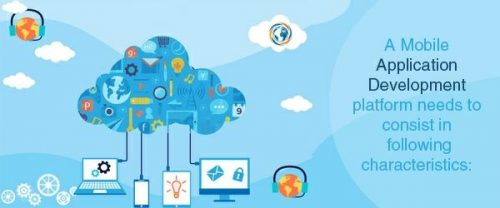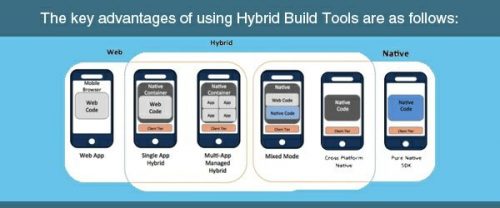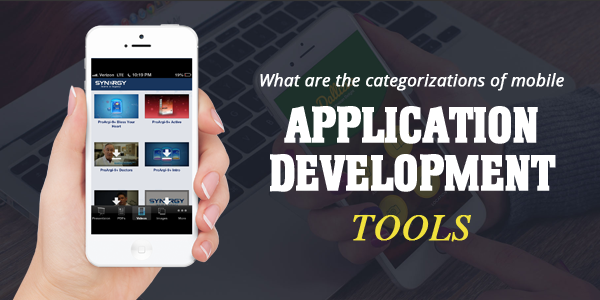We are seeing a great rise in the acceptance of mobile apps in every business domain. But, many businesses getting these apps built are experiencing challenges in reaching their target audience. The key challenge is the presence of multiple platforms and devices. Developers face challenges in devising such applications which have similar look & feel across all operating systems and devices. There are different operating systems; each of them using different technologies and even, a single platform runs on different devices with different versions/subversions, such as Android.
An ideal mobile application development platform is one which offers all essential tools, technologies, and the required documents helping app developers easily build an app. It is also supposed to have the necessary framework which is used in creating B2B and B2C applications for specific platforms. Also, the platform should offer middleware servers. Middleware servers connect and synchronize data with the backend system. They remove the duplicate work by allowing businesses to write and maintain data at a single place.
A mobile application development platform needs to consist in following characteristics:

Integrated Development Environment (IDE) – An IDE offers plug-ins, visual editors, property and form builders, debuggers and score control integration.
Development and debugging support – Obvious support for generating platform specific code, platform devices, and emulators, etc.
Multiple device OS and integration support – Support device-specific code optimization, run time and feature integration.
Support for packaging and provisioning the end product – The tool set should have great support to package apps based on native and hybrid technologies. Also, it should have the feature of packaging apps for the platform using single code. It should have the capability of signing an inbuilt application and provisioning the adaptability of the single application.
Middleware server – Middleware server is the back-end server of app possessing the integration of services, support of security features, transaction management. Also, it holds management of component of device registration. The middleware servers also take care of mobile resource management (MGM).
The integration of Enterprise mobile apps – Here ERP, CRM and other system serving at back-end are integrated with the app. The integration also provides support for prebuilt data transformers, data-mappers, data-chunking and server-side cache.
Remote management and security support
An ideal toolset also needs to provide support for OTA (Over The Air) based app management and data encryption. When categorizing mobile application development toolsets for their packaging style and framework, the two major types are as follows:
- Native build tools for react native app development
- Hybrid build tools for hybrid apps development
Native Build tools
A standard and well-defined process are followed by mobile application tool vendors. A product resulted out of such process provide sophisticated IDE tool which can be used in designing and developing apps using proprietary frameworks.
When an app, specifying the target OS, is created using natively built tools, the toolset naturally optimizes its packaging for that specific platform. Here device or platform specific runtime does not only take care of UI screen optimization but it also handles various other things like memory, power, consumption and the management of bandwidth.
These toolsets also provide strong middle features which include offline data synchronization, device security, back-end integration, transaction management and several other things.
The major advantages of this process are as follows:
- The toolset provides an outstanding WYSIWYG editors with drag & drop feature. It also provides support for expression builders, script and property sheets.
- The toolset guarantees diversity between device and platform.
- The apps built using such toolset promises to deliver excellent performance.
- It allows you rapidly pushing your app into the market.
- You need to code an application only for once and then it can be implemented to multiple of platforms.
But there are certain disadvantages of using native toolset such as:
- The architecture is built using the proprietary framework.
- Vendor-lock remains problematic.
- You need learning new skill-set if your want runs things smoothly in the toolset.
- The license of a toolset may be either CPU-based or device/session based.
Hybrid Build tools:
Hybrid app development toolsets are based on both web and native mobile application development technologies. They use HTML5, CSS, and JavaScript for coding an app. Hybrid app primarily concentrates on providing middle server features. The server acts as a gateway between the app and back-end system. Hybrid toolsets for app development generally use REST web services.
Read more: top software development functions
The key advantages of using Hybrid Build Tools are as follows:

- Hybrid toolsets are based on open standards thus developers are free to use them at their convenience.
- Their framework is flexible allowing developers selecting the user interface framework that they want.
- The generated code can be implemented to multiple of platforms.
- If it’s not free, then the cost remains very limited. Because these toolsets are based on open standards, they abide a liberal policy of licensing.
They also have some disadvantages, such as –
- It’s hard to expect device diversity from these toolsets. Developers will need depending on UI frameworks if they want to create cross-platform apps. Also, they will need fine-tuning the UI to every platform or devices they targeting.
- Hybrid toolsets aren’t often seen delivering user experience equal to a native app.
- Developers frequently require tweaking the code for different platforms or device screen resolutions.
If you’re looking for a solution oriented mobile apps company in India, Pixelcrayons offers you end-to-end solutions with benefits of 60% development cost and 100% money back guarantee.
We expertise in Hybrid as well as Native Apps:


Thanks for helping us understand this topic. You have written it in a way that makes it very simple to understand. Thank you so much.